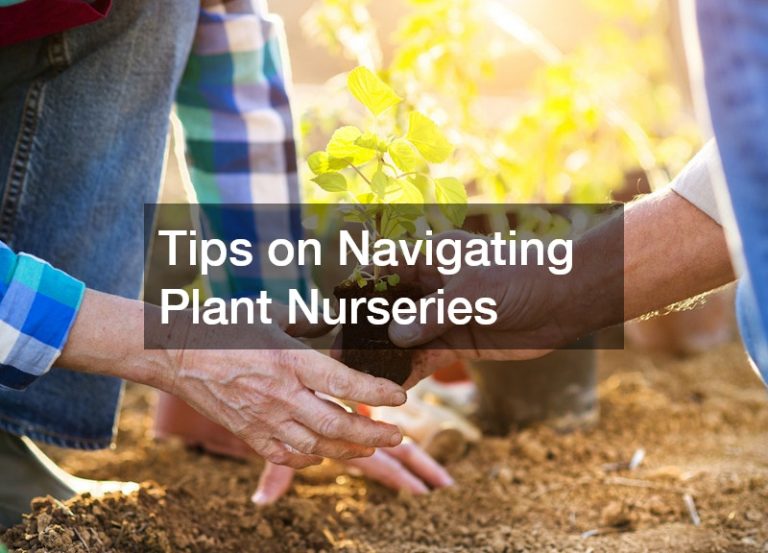Visiting a plant nursery can be an exciting adventure for both novice gardeners and seasoned horticulturists alike. Whether you’re looking to add greenery to your home, start a vegetable garden, or simply enjoy the beauty of nature, knowing how to navigate a plant nursery can enhance your experience and help you make informed decisions. Here are some practical tips to make the most out of your visit to a plant nursery in Baton Rouge.
1. Do Your Research Before You Go
Before heading to a nursery, take some time to research what you’re interested in.
Consider the following:
Plant Types: Are you looking for indoor plants, outdoor plants, shrubs, or trees? Understanding what types of plants suit your needs and climate will help narrow down your options.
Hardiness Zones: Familiarize yourself with your local hardiness zone, which indicates what plants will thrive in your area. Most nurseries will have this information readily available.
Care Requirements: Different plants have different needs in terms of light, water, and soil. Knowing what you can commit to will help you choose plants that will thrive in your environment.
2. Make a List
Creating a list of plants you’re interested in can help keep you focused during your visit:
Specific Plants: Note any specific plants you want, along with their care requirements. This can prevent impulse buys that may not suit your home or gardening style.
Additional Supplies: Consider any additional gardening supplies you might need, such as pots, soil, fertilizers, or gardening tools.
3. Visit During Off-Peak Hours
If possible, visit the nursery during off-peak hours, such as weekday mornings or late afternoons:
Personal Attention: Fewer customers mean more personalized attention from staff, allowing you to ask questions and get expert advice without feeling rushed.
Less Crowded: A quieter environment makes it easier to browse and enjoy the plants without the hustle and bustle.
4. Engage with the Staff
Don’t hesitate to engage with the nursery staff; they can be a wealth of information:
Ask Questions: Inquire about specific plants, their care needs, and the best practices for growing them. Experienced staff can often provide insights based on local climate and soil conditions.
Request Recommendations: If you’re unsure about what to buy, ask for recommendations based on your space, preferences, and gardening experience.
5. Examine Plants Carefully
When choosing plants, take the time to examine them closely:
Check for Health: Look for signs of pests or diseases, such as yellowing leaves, spots, or wilting. Healthy plants should have vibrant colors and firm, unblemished leaves.
Root System: If possible, check the root system by gently removing the plant from its pot. Healthy roots should be white and well-developed, while dark, mushy roots may indicate rot.
Size and Growth: Consider the size of the plant in relation to your space. A small plant may take longer to grow but can fit better in tighter areas, while larger plants can make a statement.
6. Understand Pricing and Policies
Before making a purchase, be aware of the nursery’s pricing and return policies:
Compare Prices: If you’re considering multiple nurseries, compare prices for similar plants to ensure you’re getting a good deal.
Return Policies: Familiarize yourself with the nursery’s return policy in case you experience issues with your plants after bringing them home.
7. Take Notes and Photos
If you’re visiting multiple nurseries or are unsure about certain plants, consider taking notes or photos:
Track Options: Write down details about plants you like, including their names and care requirements, so you can reference them later.
Visual Reference: Photos can help you remember the plants and their appearance, which is useful when making decisions later.
8. Consider Seasonal Availability
Plant nurseries often have seasonal offerings that can impact your choices:
Seasonal Plants: Certain plants may only be available during specific seasons. Be aware of what’s in season to ensure you’re getting the best selection.
Best Time to Plant: Timing can also affect plant health. Some plants thrive when planted in the spring, while others may be better suited for fall planting.
9. Plan for Transportation
Consider how you’ll transport your plants home:
Space in Vehicle: Ensure your vehicle has enough space to safely transport your plants without damaging them.
Protection: Use blankets or towels to protect your plants from bumps during the ride. For larger plants, consider securing them to prevent tipping over.
10. Follow Up with Care
Once you’ve selected your plants, follow up with proper care:
Read Instructions: Take time to read any care instructions provided by the nursery, including watering, light, and soil needs.
Transition Period: Allow your new plants to acclimate to their new environment gradually. This may involve placing them in a shaded area for a few days before introducing them to direct sunlight.




